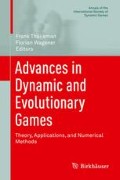Abstract
Around 50 years ago, P. Naor has derived the optimal social and individual admission rules to an M/M/1 queue. In both cases, the optimal policies were identified to be of a pure threshold type: admit if and only if the number queued upon arrival is below some threshold. The value of the threshold in the individual optimal case was shown to be larger than the one for the social optimal criterion. We make the observation that admitting according to a threshold policy requires only the information of whether the queue is above or below a threshold. We call these “red” and “green” light, respectively, associated with a threshold, say L. The question that we pose in this paper is: what happens if one restricts to the above information pattern but let the threshold level L be chosen by the system which signals to arrivals whether the queue is above or below the threshold. Can one find a choice of a threshold that will induce an equilibrium that performs better than in the case that full information is available? We also examine the question of what is the threshold that maximizes the revenue for the queue. We show that the choice of threshold that maximizes the system’s performance at equilibrium is the same as under the full information case if the service in the queue follows the FIFO discipline.
Access this chapter
Tax calculation will be finalised at checkout
Purchases are for personal use only
References
Altman E, Shimkin N (1998) Individual equilibrium and learning in processor sharing systems. Oper Res 46:776–784
Altman E, Gaujal B, Hordijk A (2000) Admission control in stochastic event graphs. IEEE Autom Control 45(5):854–867
Hordijk A, Spieksma F (1989) Constrained admission control to a queueing system. Adv Appl Probab 21:409–431
Hsiao MT, Lazar AA (1991) Optimal decentralized flow control of Markovian queueing networks with multiple controllers. Perform Eval 13:181–204
Korilis YA, Lazar A (1995) On the existence of equilibria in noncooperative optimal flow control. J ACM 42(3):584–613
Naor P (1969) On the regulation of queueing size by levying tolls. Econometrica 37:15–24
Spieksma F (1990) Geometrically ergodic Markov Chains and the optimal control of queues. PhD thesis, Leiden University
Stidham S (1985) Optimal control of admission to a queueing system. IEEE Trans Autom Control 30:705–713
Stidham S, Weber R (1989) Monotonic and insensitive optimal policies for control of queues with undiscounted costs. Oper Res 37:611–625
Stidham S, Rajagopal S, Kulkarni VG (1995) Optimal flow control of a stochastic fluid-flow system. IEEE J Sel Areas Commun 13:1219–1228
Yechiali U (1971) On optimal balking rules and toll charges in a GI | M | 1 queueing process. Oper Res 19:349–370
Author information
Authors and Affiliations
Corresponding author
Editor information
Editors and Affiliations
Appendix: Uniform f-Geometric Ergodicity and the Continuity of the Markov Chain
Appendix: Uniform f-Geometric Ergodicity and the Continuity of the Markov Chain
The continuity of the steady state probabilities and thus of the expected queue length hold for the case of finite k since the chain is ergodic with finitely many states. We thus focus below on the case of infinite k. We show continuity of the expected queue length in q for \(q_{{R}}\) restricted to some closed interval for which the corresponding value of \(\underline{\rho }_{\,_{ R}}\) is smaller than 1. (Due to Lemma 1 there exists indeed an interval such that any policy for which \(q_{{R}}\) is not in the interval cannot be optimal.)
We show that the Markov chain is f-Geometric Ergodic and then use Lemma 5.1 from Spieksma (1990).
Consider the Markov chain embedded at each transition in the queue size. Thus for \(I \geq \max (L,1)\), with probability β the event is a departure and otherwise it is an arrival, where
Note α > 0 implies that β > 1∕2 (α is defined in the proof of Theorem 1).
Define \(f(i) =\exp (\gamma i)\), for any \(I \geq \max (L,1)\),
and where \(z:=\exp (-\gamma )\). Note that Δ = 0 at
Thus Δ < 0 for all γ in the interval \(\left (0,\log \left ( \frac{\beta }{1-\beta }\right )\right )\) (which is nonempty since we showed that 1 > β > 1∕2). We conclude that for any γ in that interval, f is a Lyapunov function and the Markov chain is γ-geometrically ergodic uniformly in q.
Rights and permissions
Copyright information
© 2016 Springer International Publishing Switzerland
About this chapter
Cite this chapter
Altman, E., Jiménez, T. (2016). Dynamic Admission Game into an M/M/1 Queue. In: Thuijsman, F., Wagener, F. (eds) Advances in Dynamic and Evolutionary Games. Annals of the International Society of Dynamic Games, vol 14. Birkhäuser, Cham. https://doi.org/10.1007/978-3-319-28014-1_2
Download citation
DOI: https://doi.org/10.1007/978-3-319-28014-1_2
Published:
Publisher Name: Birkhäuser, Cham
Print ISBN: 978-3-319-28012-7
Online ISBN: 978-3-319-28014-1
eBook Packages: Mathematics and StatisticsMathematics and Statistics (R0)

